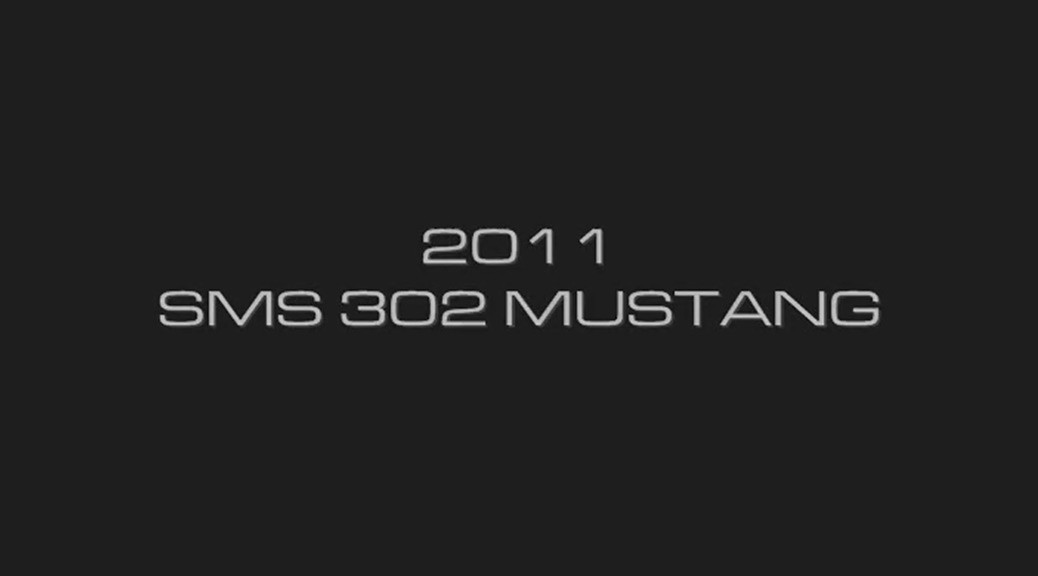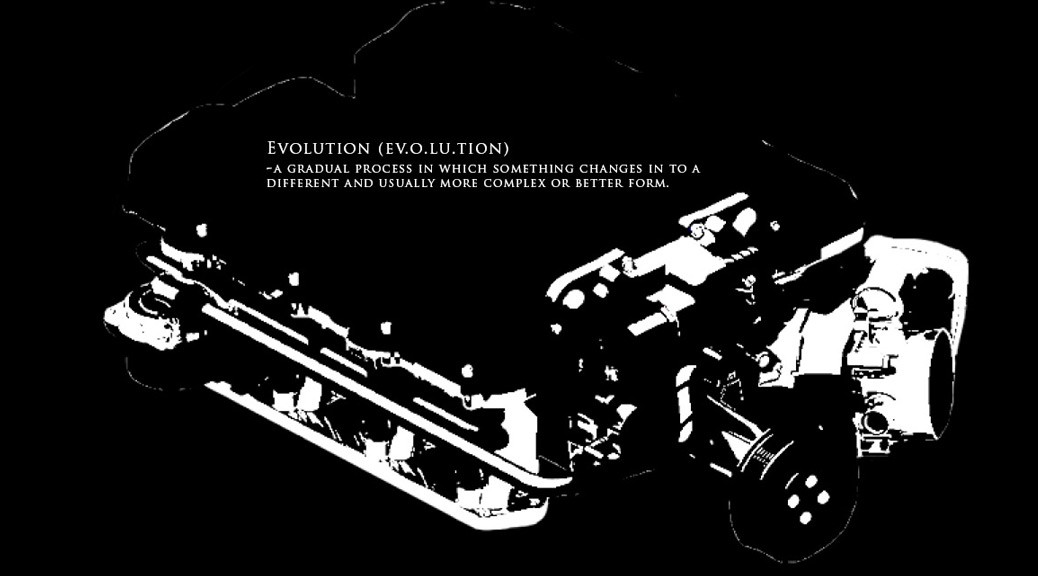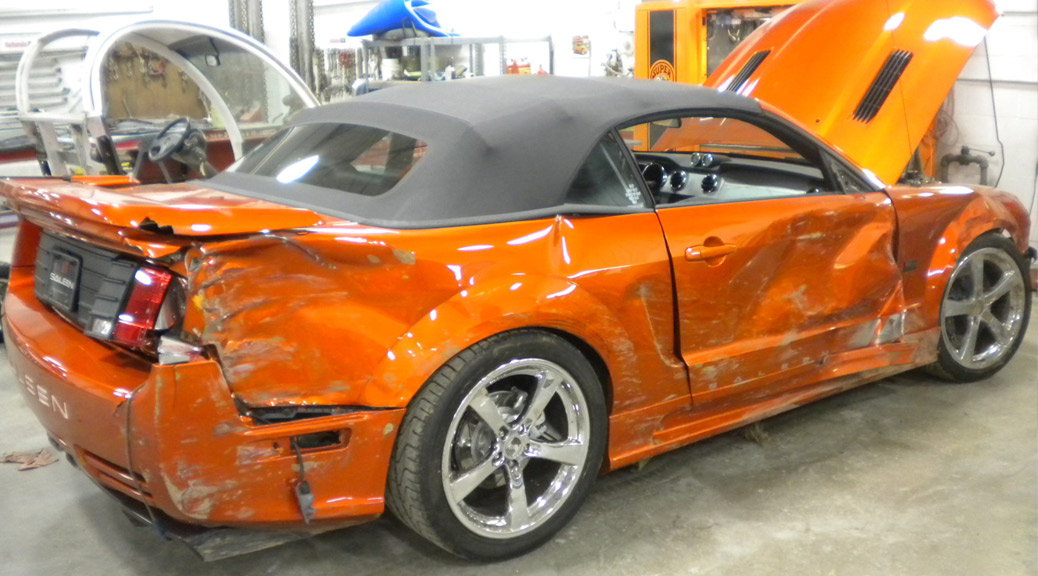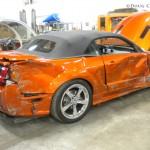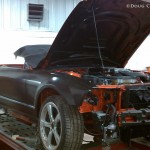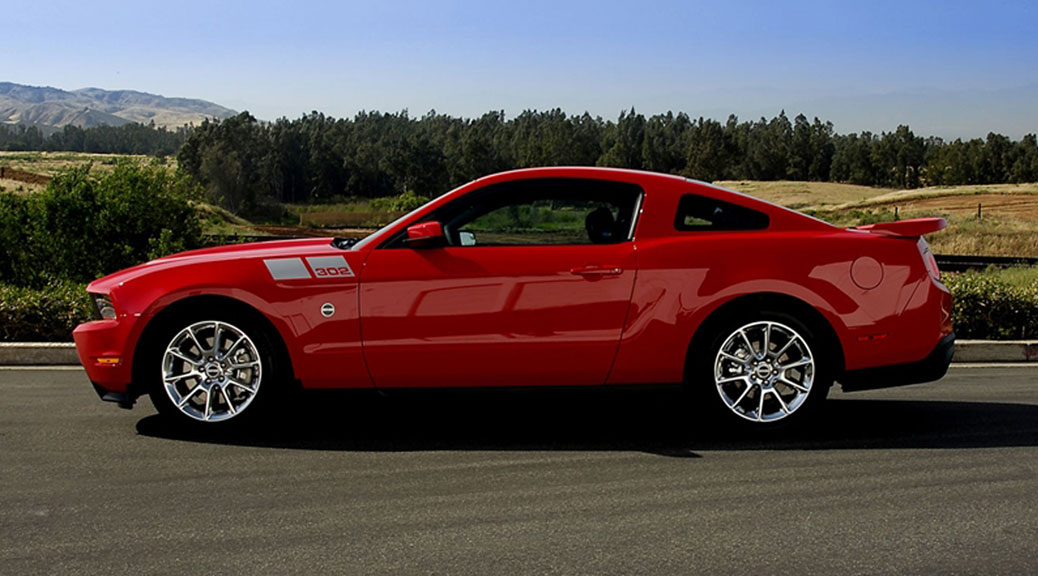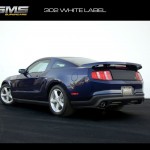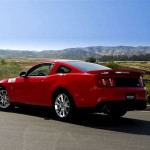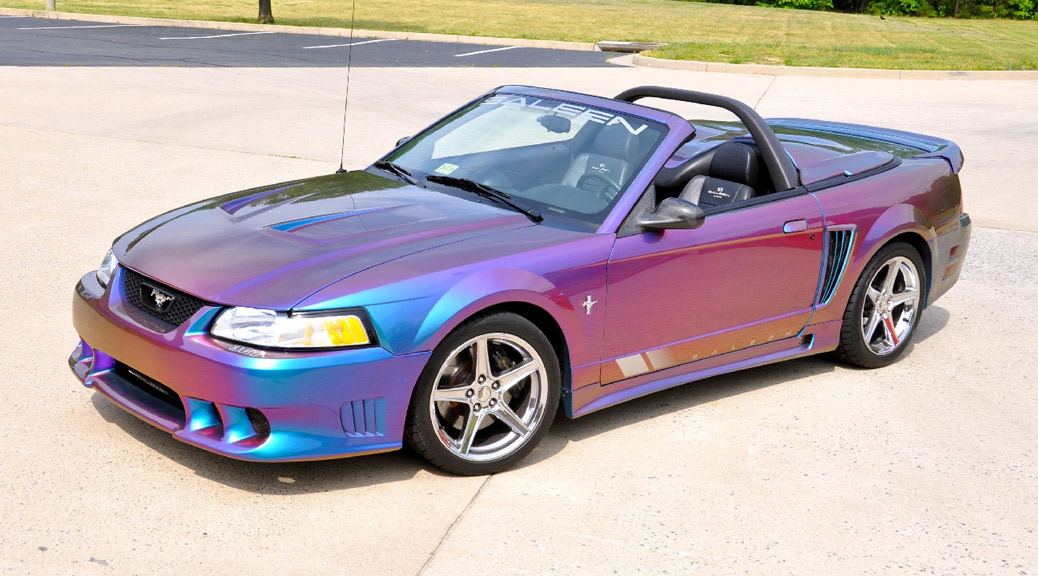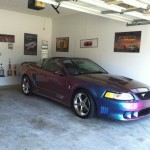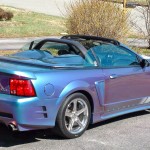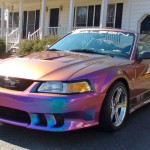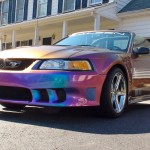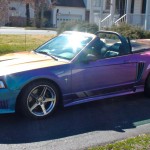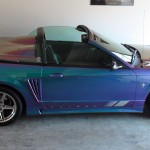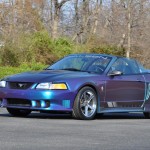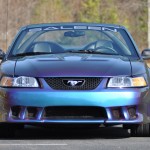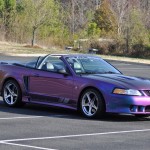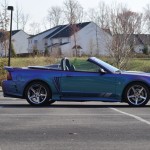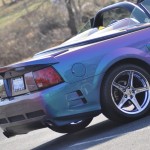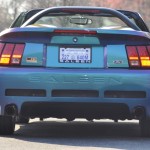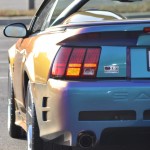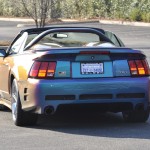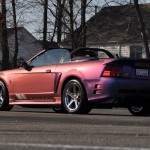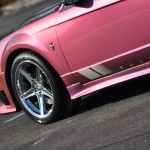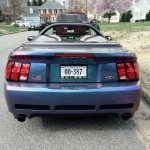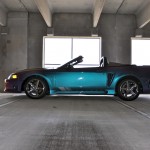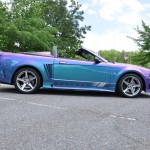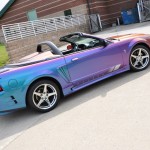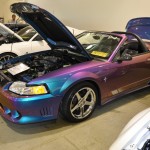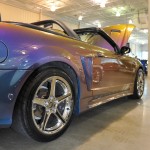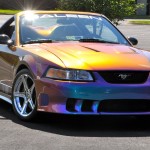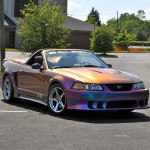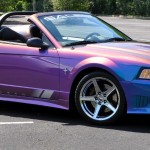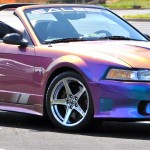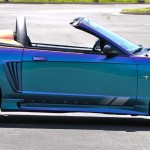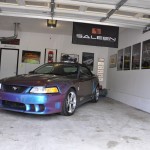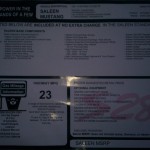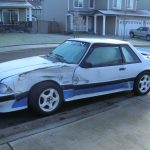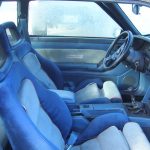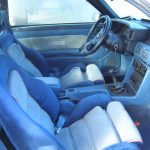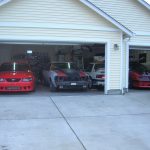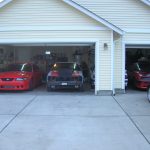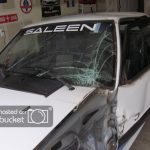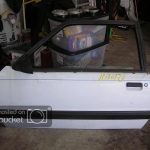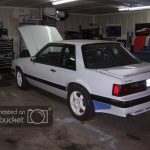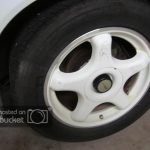[Source: SMS Supercars]
All posts by David Bruno
CARLISLE ALL-FORD NATIONALS 2011 COVERAGE
WINNERS LIST FOR ALL-FORD NATIONALS 2011
R148 – 1984 – 1993 SALEEN
347 KOENIG, KEVIN 1993 FORD SALEEN FIRST PLACE
348 GLASMIRE, JAMES 1988 FORD MUSTANG SALEEN SECOND PLACE
349 SANTOS, JOSE 1986 FORD SALEEN MUSTANG THIRD PLACE
R149 – 1994 – 2004 SALEEN
350 SHANAHAN, BRIAN 1997 FORD SALEEN S351 FIRST PLACE
351 DEBELLA, JOHN 2002 MUSTANG SALEEN CONVERT SECOND PLACE
352 NELEPOVITZ, MARK 1997 FORD SALEEN S281 THIRD PLACE
R150 – 2005 & UP SALEEN
353 LOYA, RICHARD 2007 FORD MUSTANG FIRST PLACE
354 DEMARCO, MICHAEL 2005 FORD MUSTANG SECOND PLACE
355 SIMMONS, MELISSA 2007 FORD SALEEN THIRD PLACE
VIDEO: 2011 SMS 302 MUSTANG WALKAROUND
From our friends at SMS Supercars.
[Source: SMS Supercars]
SPEEDLAB TEASES SERIES 7 SUPERCHARGER FOR 2011
SPEEDLAB SERIES 7 SUPERCHAGER
All new design for the 5.0L 4V Motor
EVOLUTION (EV.O.LU.TION)
– A gradual process in which something changes into a different and usually more complex or better form.
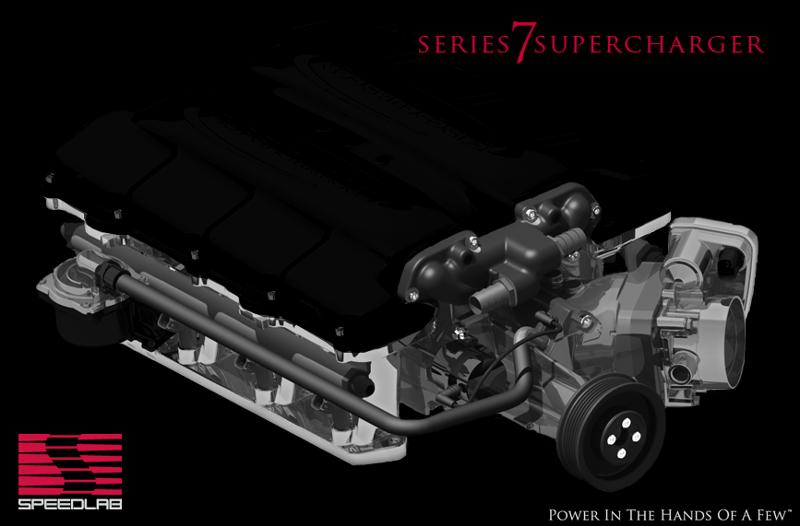
Follow the development and testing of the all new Speedlab Series 7 Supercharger designed for the new 5.0L 4v Ford Mustang GT Motor. Release date and pricing will be announced soon! Be the first to know all the details and info on this Supercharger by following the progress either on our SALEEN SPEEDLAB Facebook page or in the Saleen Club of America club forums!
THE RESTORATION OF 08-0025E
PHOTOS & TEXT: DOUG CAMPBELL
*** Editor’s Note ***
Shorty after Campbell Ford finished rebuilding 08-0025E, we were asked to remove all discussion and photo evidence of this episode. Most material was lost through time.
Click here to participate in the discussion.
STEVE SALEEN’S SMS SUPERCARS INCREASES VEHICLE PRODUCTION
WITH THE RELEASE OF THE SMS 302 WHITE, YELLOW AND BLACK LABEL MUSTANGS
Corona, California – April 6, 2011
Steve Saleen’s SMS Supercars increases vehicle production with the release of the SMS 302 White, Yellow and Black Label Mustangs. The expanded model lines are a tribute to his racing heritage colors, marketed under the White, Yellow, and Black Labels.
The SMS 302 White Label is normally aspirated, making 440 horsepower, with performance suspension, exhaust, interior ergonomics and exterior styling.
These factory assembled vehicles represent a volume expansion. SMS Dealers are enthusiastic with the release of these new model lines supporting increased production and sales. SMS Supercars is pleased to announce a MSRP of $35,540 (plus transportation, tax, title, registration) for this 440 horsepower normally aspirated vehicle; the White Label SMS 302 representing an astounding price for a complete high performance vehicle.
The SMS 302 Yellow Label, making 545 horsepower, has all of the White Label attributes plus a supercharger and SMS 19″ wheel/tire assemblies. SMS Supercars dealers once again, capitalizing on consumer interest and increased volumes, are thrilled to have a supercharged car of this value. The MSRP of this 545 horsepower SMS 302 Yellow Label is $45,540 (plus transportation, tax, title, registration). Nowhere else is the consumer able to achieve the performance and value SMS Supercar offers.
Steve Saleen’s SMS Supercars continues to offer the ultimate, vehicle manufactured and marketed as Black Label models. These continue to be his ultimate performance / lifestyle vehicles consisting of advanced aerodynamic body components, his S4 suspension, SMS leather interior, 575 horsepower, and many other features and options. Consumers desiring a truly unique vehicle may order custom paint resulting in a vehicle which most often is one of a kind while still maintaining assembly line uniformity. All of the SMS Supercars receive SMS Serialization and are identified in the Steve Saleen SMS Registry.
“I wanted to produce the finest vehicles in keeping with my performance and lifestyle philosophy and succeeded with the previously released top of the line SMS vehicles. Like many consumers and enthusiasts, I recognize the economic challenges facing us and want to provide additional choices, well within the purchase consideration of a very wide range of buyers” stated Steve Saleen. SMS Supercars is able to present many of their top of the line Black Label vehicle components and engineering knowledge in these new White and Yellow Label models.
The differences SMS vehicles present are dramatic. Noticeable responsiveness in acceleration, vehicle turn-in, along with lateral transitions, is realized along with the exhaust note, further signifying this is a very exciting vehicle to own and drive.
SMS Supercars is proud to offer these two new models, the SMS 302 White Label and SMS 302 Yellow Label, in addition to our ongoing production of ultimate Top of the Line SMS 302 Black Label vehicles.
About Steve Saleen’s SMS Supercars – Speed, Science and Style
SMS Supercars, a company founded by renowned race driver and automotive icon Steve Saleen, is a manufacturer of high-end lifestyle performance vehicles, technical performance parts, lifestyle accessories and apparel. SMS Supercars designs, engineers, tests, certifies, manufactures and assembles all of its own products and vehicles. SMS Supercars’ first vehicles, the SMS 570 and SMS 570X Challenger were launched in early 2009, with the SMS 302 and 302SC Mustang models following in April of 2010. The SMS 620 and SMS 620X Camaro will complete the offering of SMS Signature Series vehicles in the summer of 2012.
Click here to participate in the discussion.
[Source: SMS Supercars]
CLOSER LOOK: S281 SC SPEEDSTER (00-0387)
PHOTOS: JOHNNY ELIAS
Extreme Rainbow became the first optional Saleen custom color to capture both media and enthusiast attention. Developed by BASF, a partner in the Horse of a Different Color contest of 1996 that produced a one-off Extreme Mystic S351, Rainbow took a baton from Ford Motor Company by continuing to offer color changing pigments for mass consumption.
Introduced through BASF’s Extreme Colors line, Rainbow would become a long running staple in Saleen’s custom color chart. From late 1996 through 2009 Saleen produced 19 vehicles in this retina blasting hue.
One such vehicle is 00-0387, a unique S281 Supercharged Speedster loaded to the gills with optional equipment. Current owner, Johnny Elias, located 00-0387 by way of a popular internet auction site this past winter. No stranger to New Edge Saleen Mustangs, Johnny captured 00-0387 with much anticipation.
Produced in May 2000 and delivered to Marietta Ford, #387 features a laundry list of optional Saleen equipment. Beginning with an S281 Supercharged convertible, #387 hosts the following: Heat extractor hood, 10″ rear wheels, tire upgrade, chrome wheels, 13″ front brake upgrade, Saleen/Recaro leather seating, Saleen floor mats, carbon fiber accent trim, and Speedster package.
For the 2000 model year Saleen produced 974 Mustangs, 203 were Supercharged convertibles, 178 featured 5-speed manual transmissions and 94 were Speedsters. Of those, 19 had Saleen/Recaro leather seating with four featuring carbon fiber trim.
Of the 974 street Mustangs produced for the model year, eight were painted a Saleen custom color.
Click here to participate in the discussion.
CARLISLE ALL-FORD NATIONALS IN CARLISLE, PA: JUNE 3-5, 2011
Carlisle Ford Nationals
Jun 3 – Jun 5, 2011
Adult Admission: Th.-Sun. $10 / 4-day Pass $30
Child Admission: 8 and under – FREE
Gate Times: Th.-Sa. 7am-6pm / Sun. 7am-3pm
Gate-N-Go Deadline: May 02, 2011
The entire family will enjoy the largest and most thrilling All-Ford event in the world. Ford, Mercury, Lincoln fans will have a showcase of over 2,200 vehicles to check out on the NPD showfield. During our 15th anniversary event, you will enjoy: indoor displays of concepts, customs and historically-significant cars and trucks; test drives by Ford Motor Company; a burnout competition; kids’ activities; industry guests; a car giveaway; NHRA drag racing; autocross for all skill levels and club gatherings. The excitement continues with a shopping experience you won’t soon forget, including an enormous swap meet, car corral and the Manufacturers Midway for the best in parts buying.
Online showfield registration for the 2011 season is open! If you haven’t registered online, what are you waiting for? Save time and register online today. You can also register by calling our office at (717) 243-7855.
Please note: refunds will not be issued less than 19 days prior to the beginning of the event and winners’ lists are subject to change.
THE LONE BLUE INTERIOR COUPE (89-0348)
One-of-One
The Strange Life of 89-0348
Photos: “Bottlefed83” via Photobucket
Original Post: November 16, 2008 at 10:28 PM
Original Thread: FOUREYEDPRIDE.COM
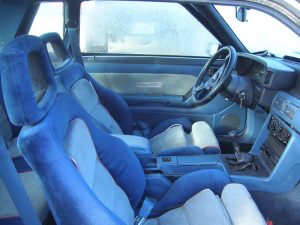
The 1987 through 1993 Saleen Mustangs based upon 2-door “coupe” bodies (aka: hardtops, notchbacks) are a fairly uncommon sight. These coupes were never produced in large quantities and were never marketed or advertised on a national, mainstream channel. The “coupes” were mainly side-note and news brief articles for enthusiast publications during 1987 and 1988.
When we look back at 1987-93 coupe production, the estimated tally equaled 65 units of Saleen Mustangs that were once roaming the streets with their funky square roofs and trunk lids. Two of the more famous examples were the Scarlet Red 87-0068 coupe for Austin Craig and the not-so-controversial run of fourteen white 1988 SSP coupes for Damerow Ford of Beaverton Oregon.
The rarity of these coupes did not translate to kid glove care. When you examine the individual histories and lives of these rare Saleen Mustangs, a range of use and abuse comes to the surface. Yes, there were thefts that were never recovered, other cars were stolen and stripped of all their equipment, a few were damaged and scrapped, while some were used as “normal” vehicles and treated as such.
When we review 1989 vehicle production, Saleen Autosport shipped out about 900 serialized vehicles to dealers. When you take into account the unnumbered 1989 California Sport GT and “other” dealer specials, 1989 was the most prolific year for the 6-year-old company.
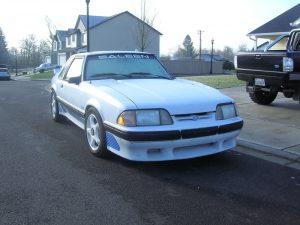
Over the 1989 model year, Saleen produced an estimate of 26 Saleen Mustangs on the 2-door coupe body. Of those 26, 11 are believed to have been painted Oxford White. When we view those 11, Smoke Grey interiors were in 10 units while one featured Regatta Blue interior appointments with custom Saleen/FloFit seating. Production number 89-0348.
89-0348 was delivered through Burch Ford, a source known for oddly ordered Saleen Mustangs, with a stereo delete and leather Ford SVO shift knob as options. This car is the only known ’89 Saleen to have the “SVO Knob” note and is one of six serialized Mustangs for the model year to have a stereo delete.
We don’t know much about the life and times of 89-0348. There was speculation the car was once hit hard in the rear and repaired. Years later it was hit on the driver’s side bending the roof. Eventually these remains were used to create a tribute car while the bent body became home to overgrown brush and forest creatures. -DB
[Source: FourEyedPride.com]
CHARGE! THE ELECTRIFYING REBELS
By: ALYSHA WEBB on November 29, 2010
Original Article: AUTOMOTIVE NEWS, VOL. 85 ISSUE 6440
How inventors, gamblers, dreamers and true believers
are trying to overturn internal combustion
CHARGE Revolutionaries find an outlet in autos
Paul Wilbur helped design the second-generation Dodge Viper and the Saleen S5S Raptor supercar — two of the most powerful and least fuel-efficient cars on the road. He once owned a Mustang convertible with a 650-hp engine.
Wilbur, 52, worked in product planning at Chrysler Corp. and managed the Jeep and Dodge car brands. He led Saleen Performance Vehicles. He also tried but failed to make niche design house ASC Inc. in suburban Detroit a builder of specialty vehicles.
Now Wilbur leads a team of fellow optimists who aim to build a superlightweight electric vehicle from the ground up. In a cavernous warehouse north of San Diego, he takes a rubber sledgehammer to the body of the three-wheeled pod to demonstrate one difference from the metal speedsters he used to make.
“I enjoy overcoming challenges that people say can’t be done,” he says as the sledgehammer bounces off the Aptera 2e, as the vehicle is known.
Wilbur’s challenge extends far beyond just making a car with a dentproof body. It involves changing the way the world thinks about transportation.
But Paul Wilbur won’t have to do it alone. The ex-Detroiter shares the field with other dreamers in California — inventors, entrepreneurs, an ex-Marine — all of whom hope to revolutionize personal transportation. Among those dreamers are Andy Frank, father of the plug-in hybrid electric vehicle; Simon Saba with his electric roadster; and Kevin Czinger, former CEO and now adviser to electric-vehicle manufacturer Coda Automotive.
Aptera Motors
Car: The 2e, a futuristic, 3-wheeled electric vehicle
Status: Seeking federal loan to start production
Secret sauce: Lightweight materials developed by specialist who worked on Callaway Golf’s Big Bertha driver
$4 gas: Time to abandon guzzlers?
In mid-2008, Wilbur was at Saleen when the price of a gallon of gasoline hit $4. Boardroom discussions focused on how bad that would be for Saleen, a company that turned out cool but gas-guzzling cars. Then a recruiter approached Wilbur about running Aptera.
Steeped in an over-the-top culture that designed cars around “what Hollywood wanted,” Aptera’s three-wheeled geekmobile seemed “a little weird” at first, says Wilbur, who is tall and balding with a salt-and-pepper beard and a manner that invites conversation. But the more he thought about it, he says, the more sense it made. He decided the 2e was the future of automotive. He made the leap.
Aptera Motors was born in 2006 to create the world’s most efficient vehicles. Its tools were an aerodynamic design, an electric drivetrain and a body made from a proprietary lightweight composite material. The 2e, its first vehicle, can go 200 miles on one charge, the company says.
Full-scale production hasn’t begun. So although it just moved into a 203,000-square-foot headquarters near San Diego, Aptera has a skeleton crew of 25 people. Eventually, Wilbur says, it will employ 2,500.
Wilbur knew he wanted Marques McCammon as his marketing chief. McCammon, 34, had worked with Wilbur at both Chrysler and ASC. At Chrysler, Wilbur says, “McCammon would say: ‘I want to make a name for myself. I want to be the African-American Carroll Shelby.’ ”
McCammon was about to start a job as the No. 2 marketing guy at a more famous EV startup, Tesla Motors, when Wilbur offered him the top marketing job at Aptera. “I had to fight for him,” Wilbur says.
The two are foils; a former colleague describes Wilbur as “the kind of guy most people would enjoy going to a bar with.” McCammon, open and loquacious, seems more like someone you would discuss a book review with.
McCammon says he went to Aptera because his five-year plan was to be in a startup. What Aptera had and Tesla didn’t was Paul Wilbur. Like the rest of the Aptera team, McCammon took a pay cut to work there. Like the others, he is betting on the future.
Jeff Steiner was a supplier to Chrysler when Wilbur worked there and later followed Wilbur to ASC. “Paul has a magnetic kind of glue that binds people together,” says Steiner, now president of Dale Earnhardt Inc.
CFO Laura Marion, 38, also followed Wilbur to Aptera. Marion, a CPA who also worked at Wal-Mart and Delphi, was Saleen’s CFO under Wilbur. Nine months after she took that job, Wilbur left for Aptera, and Marion asked for the CFO job there.
“I’ve fixed a lot of messes in my career,” she says. “The opportunity to build something from the ground up was appealing.”
The Aptera crew laughs when it is suggested that Marion followed Wilbur to California. “She isn’t much of a follower,” they say.
Says Marion, who is married with two daughters: “If you had asked me 10 years ago if I would sell my house and move my family across the nation to take a job at a startup, I would have laughed.”
The secret sauce of Aptera is in the lightweight materials that give the car range without weight. The materials guy came from an unusual place for a car executive.
David Oakley, vice president of composites technology and operations, worked at what he considers the golfing world’s equivalent of Aptera. Oakley, 50, was part of the team at Callaway Golf that created Big Bertha, the oversized driver that revolutionized golf club design. When it was introduced, people scoffed, he says, until golfers using the big-headed club started hitting the ball 15 yards past everyone else.
“A lot of people look at the Aptera 2e and think it is way out there, too,” he says.
In early 2008, Oakley left Callaway. “I was looking to strike out on my own,” he says. A supplier to both Aptera and Callaway suggested he check out Aptera. Meanwhile, Wilbur was looking for someone who knew composite materials. “Dave’s name crossed my desk as a fix-it guy when Callaway had problems with the Big Bertha,” Wilbur says.
Oakley says he’s motivated by doing “what a lot of the experts say can’t be done.”
Wilbur has assembled a team that “truly cares about each other as well as the business,” says Julie Zona, director of team development and relations for the Progressive Automotive XPrize, a contest for developing energy-efficient vehicles. Aptera was one of seven finalists but didn’t win.
“Paul is very, very good at putting a team together,” Zona says. “He is good at accentuating people’s strengths and ignoring weaknesses that don’t matter.”
That closeness is apparent during a rare afternoon golf outing at a course near Aptera’s Southern California headquarters. McCammon just took up the game. He sometimes swings and misses; the others laugh it off, and he plays on. Marion is a competent golfer; Wilbur, who once dreamed of being golf pro, is a good player. Oakley, Wilbur says, is “as good as they get.”
Efficient Drivetrains
Product: Continuously variable transmission and controls that can operate with internal combustion engines, hybrids or electrics
Status: Pitching product to automakers; no takers yet
Secret sauce: Tech whiz Andy Frank built a plug-in hybrid electric car in 1972.
From hot rods to plug-in hybrids
In high school in Salina, Kan., Wilbur played basketball and ran track, but golf was his passion. He won tournaments. His dad steered Wilbur into the family construction business. Wilbur used the money he earned working construction to buy cars. “I had 20 cars by the time I was 20 years old,” he says.
Other car fanatics in California are also dreaming of an electric-car future. Andy Frank, the chief technology officer of startup Efficient Drivetrains Inc., is credited with inventing the first plug-in hybrid electric vehicle nearly 40 years ago. But Frank, 76, fell in love with fast cars in high school in Pasadena, home of hot-rodding.
Frank was born in China. His family immigrated to Southern California when he was in grade school. Upon the advice of a well-meaning colleague, Frank’s father changed their Chinese surname from Wing to the more Western-sounding Frank.
Growing up in Pasadena, Frank developed a fascination with “things that go vroom,” he says. His first car was a “junker” 1929 Nash that cost $50 because it didn’t run. “I tried to turn it into a hot rod,” Frank says. “One of the big things in my life is I try to make everything work.”
Frank wanted to use his mechanical engineering degree from the University of California at Berkeley to become an automotive engineer, but starting pay in Detroit in 1955 was only $370 a month, he says. Boeing predecessor North American Aviation paid $450. Frank went into aerospace.
But cars were still in his blood. In the early 1970s, Frank got a doctorate and began teaching at the University of Wisconsin. “All of my research was in how to build electric cars,” he says.
Frank and his students built the first plug-in hybrid electric car for a U.S. Department of Transportation contest in 1972. It got 100 miles to the gallon, Frank says. But gasoline was still cheap at 36 cents a gallon, and nobody was looking for an alternative to the internal combustion engine.
In 1985, Frank took his enthusiasm to the University of California at Davis. “I was tired of the Wisconsin winters,” he says.
His firsts continued in California. In 1991, he and his students built a car for the SAE Supermileage contest that was powered by a lawn mower engine that got more than 3,300 miles a gallon. They won.
“The Society for Automotive Engineers wouldn’t believe it,” Frank says. “They thought we cheated.” The record stood for 15 years.
In 2006, Frank started Efficient Drivetrains to commercialize patents he had on a continuously variable transmission and controls. His transmission can operate with internal combustion engines, pure electric or hybrids, he says. Versatility is part of the patent portfolio, Frank says.
But he isn’t the top guy at his company. “I’ve never really run a business. I would be sort of a duck out of water,” Frank says.
U.S. automakers haven’t been interested in his transmission. “They want to do it themselves,” Frank says. “They don’t want to pay you a nickel for it.” These days, he’s pitching it to Chinese companies.
Frank did work on the General Motors electric-vehicle program as a contractor. Around 1999, at GM’s request, he converted an EV-1 into a plug-in hybrid electric vehicle, again using a lawn mower engine as the source of power. The converted EV-1 “took off like a rocket” and got 80 miles to the gallon, Frank says. It was crushed along with the other EV-1s.
Now, Frank is on the waiting list for a Chevrolet Volt, GM’s eagerly awaited plug-in hybrid car. As usual, Frank — who looks like the kindly professor he is, with gray hair, glasses and smiling eyes — aims to make it work better. He plans to recharge it using solar panels and install a device that communicates with a mating receptacle in a parking space and automatically recharges the car while it is parked — if that type of parking space ever exists, that is.
Ken Baker, former vice president of r&d at GM, worked with Frank, whom he calls “a brilliant engineer who thought ahead of his time.” Says Baker, now a missionary for electric vehicles: “The electric and hybrid electric-vehicle story is one of passion, perseverance and performance. Andy typifies all of those attributes.”
Saba Motors
Car: Carbon Zero Roadster
Status: Built a prototype, seeking funds to start production
Secret sauce: 0 to 60 mph in 5 seconds; conceived as a performance car that “just happens to be green.”
XPrize stirs passion, performance
While Frank has been inventing electric cars for decades, Simon Saba doesn’t even come from an automotive background. He is, however, no less passionate about electric vehicles.
Saba, founder, president and CEO of Saba Motors, has a bit of a squint in one eye from a medical problem. But he still has the trait that Bill Gross, CEO of the venture capital firm IdeaLab, likes to see in entrepreneurs.
“You need to see people’s eyes bulging out of their sockets when they talk about what they are going to do,” he says. “If you don’t have the fundamental passion, the company is going to fail.”
Saba, 5 feet 4 inches tall and a little pudgy, is also determined. He wrestled and played soccer in high school. “I never lost for lack of trying,” he says. “I like to win.”
Saba, who is married with two kids, had a good job at laser and fiber-optics company Santur Corp. when in late 2008 he read about the Progressive Automotive XPrize. “I love cars. I love ecology. The timing was perfect,” Saba says.
He quit his job to invent an electric roadster that he says offers “Tesla performance at sedan prices.”
Saba, 47, has always been a bit ahead of his time. He entered the State University of New York at Buffalo at age 16 and earned a mechanical engineering degree. In 1992, he started an Internet advertising company in Buffalo, his hometown. It failed. “Buffalo was not ready for the Internet,” Saba says.
Now he’s betting that the world is ready for his bright yellow electric car. The prototype Carbon Zero Roadster parked outside an EV consumer-adoption summit in downtown San Francisco attracts plenty of attention. Its low-slung body resembles a Mazda MX-5 Miata, but it is made of lightweight materials. Saba claims it can do 0 to 60 mph in five seconds.
“I’m going after the guy looking for a performance roadster,” Saba says. “It just happens to be green.”
The Carbon Zero Roadster isn’t in production yet; that awaits more funding. After that, low-volume production can start in six months, Saba says.
But Saba Motors, which didn’t make it past the early rounds of the XPrize competition, is still trying to attract investors. Saba says he spends his time these days on fundraising. The initial funding was all Saba’s money. “My retirement fund,” he says.
Recently, Saba met with top Silicon Valley fundraisers. He’s optimistic, a necessary trait in this group of dreamers.
Those who know Saba are betting he will make it. Rob Crandall, Saba’s boss at a former employer, JDS Uniphase Corp., calls him “high speed.”
“If I had $15 million,” Crandall says, “Simon is a pretty good guy to bet on.”
Coda Automotive
Car: Coda Sedan, a 5-seat electric vehicle
Status: Recently postponed launch from December to second half of 2011
Secret sauce: Coda says its lithium ion battery system gives its car 40% more usable energy than similar systems.
Coda’s ‘vanguard’ road is bumpy
Funding isn’t the only hurdle startups face. Turnover at the top also can roil the waters in the race to change transportation.
Coda Automotive, a startup in Santa Monica, Calif., has landed investments of $125 million; it is seeking more funding. The company is making a nondescript pure electric sedan. It had planned U.S. deliveries in December but this month said it would not begin selling its car until the second half of 2011.
Former Coda CEO Kevin Czinger, 51, was an investment banker in a previous life. That probably helped Coda land the initial investment. He also worked at online grocer Webvan, a Silicon Valley startup.
But the skills needed to lead an automotive startup — even one with revolutionary technology — aren’t always a match with investment banking and Silicon Valley backgrounds.
In mid-November, Czinger resigned as CEO. “There are different roles you take at different times in a movement,” he said at a Los Angeles Auto Show reception for Coda staff and investors.
Czinger’s departure came on the heels of the resignation of marketing chief Michael Jackson, a former GM executive. But Czinger said he still believes in Coda. He now is senior strategic adviser to the startup.
“I’m one of [Coda’s] largest shareholders. I’m 150 percent into the goal,” he said, sounding annoyed that his commitment to the mission was questioned.
Looking fit in a brown leather jacket, black jeans and Doc Martens, Czinger gave the Coda troops a pep talk, calling them “the initial vanguard of a movement” to end America’s dependency on oil.
Like the other startup dreamers, he sees himself pursuing a vision that is worth some sacrifice. Czinger, an avid cyclist, said of Coda’s mission: “You’re out biking, and you are at your very limit. You drop it into the next gear, and you go even harder.”
Aptera waits for federal funds
Aptera didn’t win the XPrize, and it is waiting to hear about U.S. Department of Energy funding. Still, Paul Wilbur’s team is optimistic.
“We’d be bummed if we didn’t get the DOE funds, but then we’d be about private fundraising,” he says.
Aptera is taking $500 deposits for its funky three-wheeled two-seater. It aims to start deliveries in 2011, contingent on getting funding.
The 2e — a brand-defining model that McCammon calls “our Corvette” — is only the beginning, the team insists. A sedan is planned next. But “we will never be conventional; we will have vehicles that have conventional utility,” McCammon says.
Wilbur, who says he is exercising more, eating more healthily and six pounds lighter since moving to Aptera, sees the stakes as nothing less than saving a part of America.
Investing in new technology such as Aptera’s will pull U.S. manufacturing back from the brink of extinction and save the American middle class, Wilbur argues.
Henry Ford is his hero. Ford created the American dream, Wilbur says: “to be able to live where we want to live and work where we want to work.”
He adds: “I’m trying to learn everything from him I can.”
If passion can make it happen, Wilbur’s little team just might succeed. Gathered around a table at Aptera headquarters, team members interrupt each other as they bombard a visitor with facts about the car — its aerodynamic design, lightweight materials, low cost of operation.
“I’ve never worked on a car that I thought could change the world,” Wilbur says. His counterparts at the other startups feel the same.
Andy Frank, the chief technology officer of startup Efficient Drivetrains, is credited with inventing the first plug-in hybrid electric vehicle nearly 40 years ago.
Aptera Motors’ team and what they hope will be the car of tomorrow: From left, Marques McCammon, chief marketing officer; Laura Marion, CFO; Paul Wilbur, CEO; David Oakley, vice president of composites technology and operations; and Tom Reichenbach, vice president and chief engineer. The car? It’s the 2e, a three-wheeled electric vehicle.
Kevin Czinger left his job as CEO of Coda Automotive this month but remains a major investor in the company — and a fervent advocate for electric vehicles.
Simon Saba quit his job in late 2008 to build the Carbon Zero Roadster electric vehicle and compete in the Progressive Automotive XPrize.


